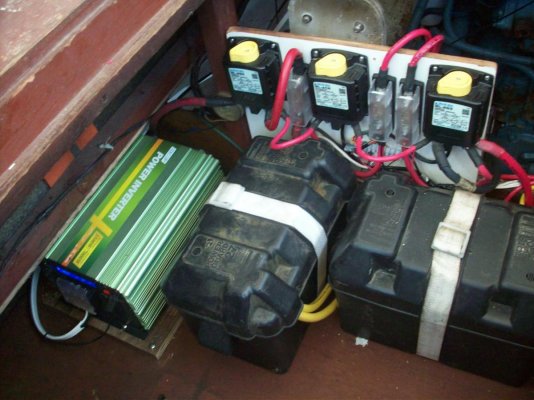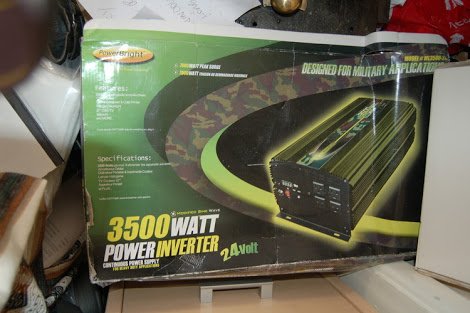Panhandler
Senior Member
I have finally lost the battle with the AIMS Power 3000W pure sine inverter charger I installed on our boat. While it's painful to admit my mistake of buying an AIMS inverter, I hope others can learn from it. Just spend the money and get one of the better ones discussed here; don't buy an AIMS inverter.
My inverter adventures, detailed in a more amusing account here, began about four months after installing it. I came home to a burning smell. After fighting with AIMS "customer support" and realizing I was on my own, I took the inverter case off to find the the screw holding the A/C line input wire on the internal side had either not been tightened properly at the factory or had slowly come loose. The result was a melted terminal block. I fixed it and reinstalled the inverter (dumb).
The inverter worked for another few months after which the boat went on the hard and the solar and inverter were left on to power small dehumidifiers. The yard called several times to say the inverter was alarming and they always had to reset it. Sure enough, when I arrived, the inverter would no longer turn on. At this point it's out of factory warranty (thankfully), although I did buy a third party extended warranty with it.
Regardless, we lived through it and I won't make the mistake of buying a cheap inverter again. Even if I can get this one replaced under warranty, the next inverter on our boat will be Magnum, Victron, or Outback. I have learned not to skimp on anything electrical, whether it is heat shrink terminals from eBay (bad idea!) or an AIMS Power inverter charger. So, if anyone out there is thinking about it, don't do it!
My inverter adventures, detailed in a more amusing account here, began about four months after installing it. I came home to a burning smell. After fighting with AIMS "customer support" and realizing I was on my own, I took the inverter case off to find the the screw holding the A/C line input wire on the internal side had either not been tightened properly at the factory or had slowly come loose. The result was a melted terminal block. I fixed it and reinstalled the inverter (dumb).
The inverter worked for another few months after which the boat went on the hard and the solar and inverter were left on to power small dehumidifiers. The yard called several times to say the inverter was alarming and they always had to reset it. Sure enough, when I arrived, the inverter would no longer turn on. At this point it's out of factory warranty (thankfully), although I did buy a third party extended warranty with it.
Regardless, we lived through it and I won't make the mistake of buying a cheap inverter again. Even if I can get this one replaced under warranty, the next inverter on our boat will be Magnum, Victron, or Outback. I have learned not to skimp on anything electrical, whether it is heat shrink terminals from eBay (bad idea!) or an AIMS Power inverter charger. So, if anyone out there is thinking about it, don't do it!



